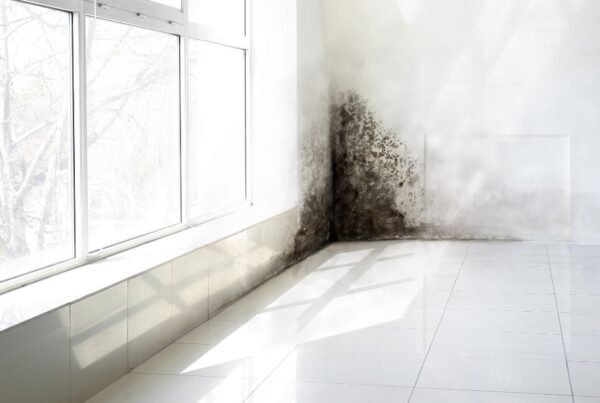 If you’re leasing or investing in commercial real estate, whether you’re a tenant, landlord, or lender, you’ll likely encounter something called an SNDA Agreement. And if you’re Googling, “Do I need to sign an SNDA?” or, “What is an SNDA in a commercial lease?”—you’re in the right place.
If you’re leasing or investing in commercial real estate, whether you’re a tenant, landlord, or lender, you’ll likely encounter something called an SNDA Agreement. And if you’re Googling, “Do I need to sign an SNDA?” or, “What is an SNDA in a commercial lease?”—you’re in the right place.
At our firm, we’ve helped numerous clients understand and negotiate SNDA agreements as part of their commercial leasing or financing deals. This blog post breaks down what SNDA agreements are, why they matter, and how to make sure your rights are protected.
What Does SNDA Stand For?
SNDA stands for:
- Subordination
- Non-Disturbance
- Attornment
It’s a three-part agreement typically used in commercial leasing transactions involving a tenant, a landlord, and the landlord’s lender (usually a bank or mortgage holder).
Let’s break down what each part means.
What Is the Purpose of an SNDA Agreement?
The purpose of an SNDA is to balance the rights of the lender and the tenant if something happens to the landlord, like a foreclosure. It’s especially relevant when a tenant is leasing space in a mortgaged commercial property.
The Three Parts Explained:
- Subordination means the tenant agrees that the lender’s mortgage takes priority over the lease.
- Non-Disturbance means the lender agrees not to evict the tenant if there’s a foreclosure, as long as the tenant complies with the lease.
- Attornment means the tenant agrees to continue the lease under a new landlord (the lender or a foreclosure buyer) if necessary.
When Do You Need an SNDA Agreement?
You’ll typically see an SNDA agreement when:
- A tenant is signing a long-term lease in a commercial property.
- The property is subject to a mortgage or loan.
- A lender wants protection in case of landlord default.
- The tenant wants assurance their lease will be honored even if ownership changes hands.
If you’re a tenant leasing space in a shopping center, office building, or industrial park, and the property has any financing tied to it, your landlord’s lender may require you to sign an SNDA.
Likewise, as a tenant, you may want non-disturbance protection if you’re investing in a buildout or relying on long-term occupancy.
What Risks Do Tenants Face Without an SNDA?
Tenants often assume that once a lease is signed, they’re safe—but if the landlord defaults on the mortgage, that assumption can fall apart quickly.
Without a signed SNDA:
- The lender may foreclose and terminate your lease.
- You could be forced to vacate the property, even if you’ve paid rent on time.
- Improvements you’ve made to the space may be lost.
- Relocation and business interruption costs could be significant.
What Should Tenants Look for in an SNDA Agreement?
If you’re reviewing an SNDA, or being asked to sign one, don’t treat it as boilerplate. Pay close attention to:
1. Non-Disturbance Clause Language
Make sure it’s clear that your lease will survive foreclosure, as long as you’re in compliance.
2. Scope of Subordination
Understand what rights you’re giving up, and whether the lease can be subordinated to future loans.
3. Right to Cure
Some SNDAs give tenants a chance to “cure” a landlord’s default to avoid triggering foreclosure.
4. Successor Obligations
Confirm that any new owner (like the lender or foreclosure buyer) will honor all the terms of the original lease, including rent, renewal options, and tenant improvements.
If any of these terms are unclear, you should not sign without legal review.
Do Landlords and Lenders Benefit from SNDA Agreements Too?
Yes, and that’s why lenders often require them.
For lenders:
- SNDA agreements clarify their priority over leaseholders.
- It ensures the lender can foreclose without lease complications.
- It makes the property more valuable in the event of foreclosure, since income from tenant leases remains intact.
For landlords:
- An SNDA helps close financing deals faster.
- It provides stability for both the lender and tenant.
- It demonstrates to tenants that the property is professionally managed.
How Can a Lawyer Help With an SNDA?
At Ayala Law, we review, draft, and negotiate SNDA agreements for:
-
- Commercial tenants
- Landlords
- Real estate investors
- Developers
- Lenders
We help you:
- Understand your exposure and rights
- Identify red flags or ambiguous language
- Negotiate more favorable terms
- Coordinate between lenders and leasing agents
An SNDA is one of those documents that only becomes important when something goes wrong, which is exactly why it needs to be done right from the beginning.
Don’t Sign an SNDA Without Understanding It
SNDA agreements are a key part of many commercial real estate transactions in Florida. Whether you’re opening a business location, leasing out a space, or securing financing, an SNDA may impact your rights if ownership or financial status changes.
If you’re not sure what you’re being asked to sign, or if you want to make sure your lease is protected, contact an experienced attorney in Miami at 305-570-2208.
You can also contact trial attorney Eduardo A. Maura at eduardo@ayalalawpa.com.
Schedule a case evaluation online here.
[The opinions in this blog are not intended to be legal advice. You should consult with an attorney about the particulars of your case].
Subscribe to Our Blog
Stay informed with our latest blog posts delivered directly to your inbox. Gain valuable legal insights, tips, and advice from our seasoned attorneys.







